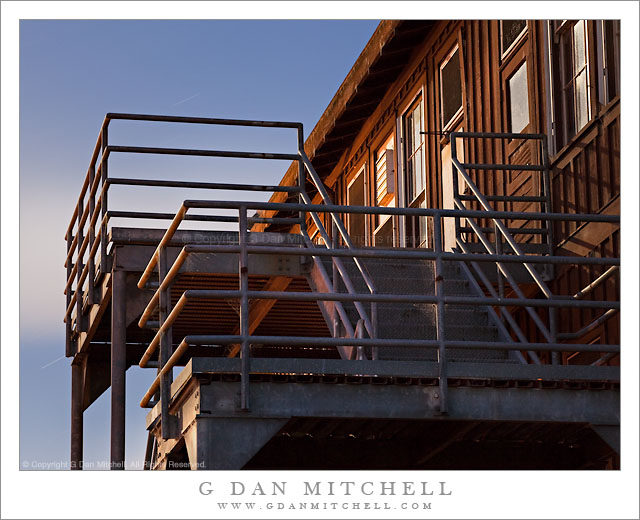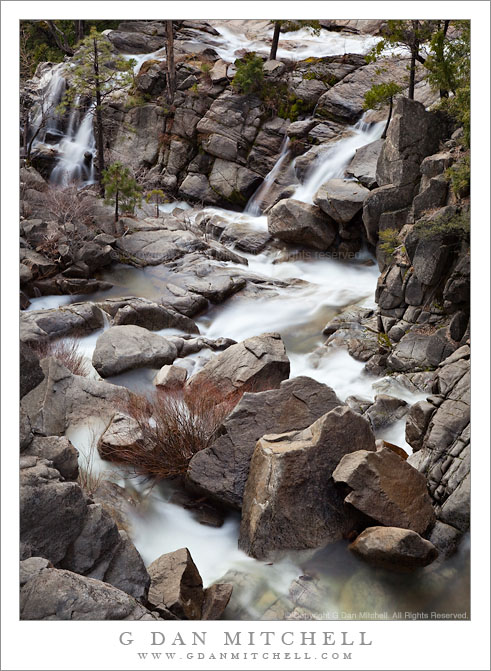Ranch and Morning Fog, Owens Valley. Owens Valley, California. October 9, 2011. © Copyright 2011 G Dan Mitchell – all rights reserved.
As is often the case, there is a story behind this photograph – an image that I think is fairly atypical of my work, at least as to the subject.
A year ago, almost to the day, I was also in the eastern Sierra to photograph aspens. And on that day I got up very early at my lodging in Mammoth and headed out before sunrise, which it was still dark actually, without a fixed idea of where or what I was going to photograph. I reached highway 395 and headed south, with a vague idea of heading up one of the promising canyons such as that of McGee or perhaps Rock Creek. But very soon I saw fog out in Owens Valley above Crowley Lake and I started thinking of instead heading away from the Sierra and out into that Valley. I ended up at a small pond from which I photographed the light from the rising sun as it hit the eastern slopes of the Sierra.
That show was over fairly quickly, so I decided to explore a bit. I had noticed mist and fog in various places in the surrounding area. Some of it seemed to come from small hot springs while in other places it seemed to extensive for that. I picked, more or less randomly, some gravel roads that headed toward the foggy areas and ended up on Hot Creek, where I made several photographs of and through the fog rising from the water.
Fast forward to this year. The first day of aspen shooting was productive, but the colors were overall not really as spectacular as I had hoped. If the intended subject “isn’t happening,” I’ll often change course and look for something else. So, once again I woke up without an aspen photography plan, but with two other vague ideas in mind. One was to go up to Minaret Summit and photograph the first light on the Minarets and Ritter and Banner Peaks. The other was to drive south again on 395 to see what would happen. When I got in my car to head out I still literally did not know where I would go. I sat in the car a moment and then, for reasons that I can’t recall, picked the 395 option. (Later I realized that the other option could have been productive, too.) I headed south on 395 and was astonished to see – again! – the fog over Crowley and the mist rising out in Owens Valley. So I went to my little lake to shoot there first and then headed out to where I had shot Hot Creek last year, but this time I kept going. At one point I passed this small range while heading out but couldn’t see a shot. Later on my return trip I passed it again, and this time I saw the stock grazing in the frozen meadow next to this small creek, with mist and fog rising everywhere. I stopped.
(By the way, this is a color photograph…)
G Dan Mitchell Photography
About | Flickr | Twitter | Facebook | Google+ | 500px.com | LinkedIn | Email
Text, photographs, and other media are © Copyright G Dan Mitchell (or others when indicated) and are not in the public domain and may not be used on websites, blogs, or in other media without advance permission from G Dan Mitchell.
(Basic EXIF data may be available by “mousing over” large images in posts when this page is viewed on the web. Leave a comment if you want to know more.)



